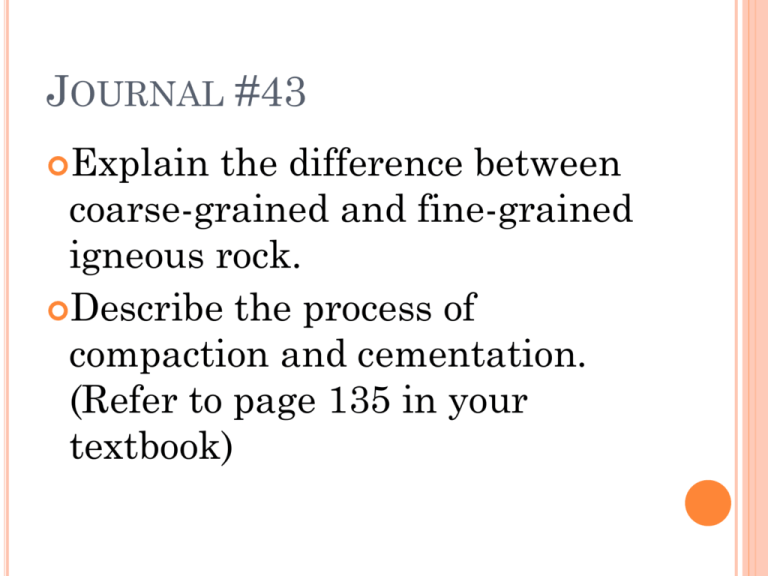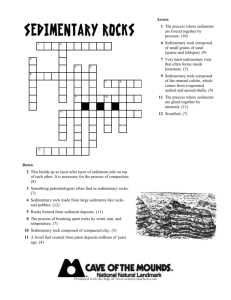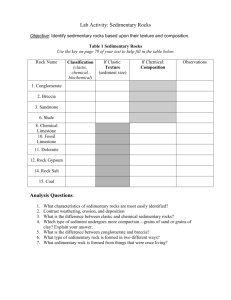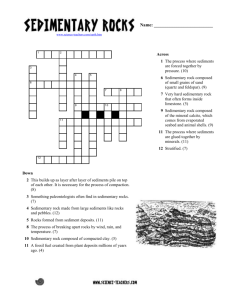sediment. - Mrs. Dawson's Classroom
advertisement

JOURNAL #43 Explain the difference between coarse-grained and fine-grained igneous rock. Describe the process of compaction and cementation. (Refer to page 135 in your textbook) TODAY, WE WILL DESCRIBE HOW SEDIMENTARY ROCKS FORM. FORMATION OF SEDIMENTARY ROCKS Loose fragments of rock, minerals and organic material are called sediment. After sediments form, they are transported by wind, water or ice to a new location. As sediments moves, it is physically and chemically changed as is deposited. FORMATION OF SEDIMENTARY ROCKS Sediment becomes sedimentary rock in 2 ways: Compaction Sediment is squeezed and in which the size of the pores space between sediment grains is reduced by the weight and pressure of upper layers. Cementation Sediments are glued together by minerals that are deposited by water. SEDIMENTARY ROCK CHANT BREAK MOVE DROP BREAK MOVE DROP All of these processes happen to a rock Weathering breaks it Erosion takes it And when the motion stops Gravity drops Wind and water move it around Gravity pulls it down BREAK MOVE DROP BREAK MOVE DROP All of these processes happen to a rock 3 MAIN CLASSES OF SEDIMENTARY ROCK 1. Chemical sedimentary rock 2. Forms from minerals that were once dissolved in water. Water evaporates out and leaves behind a rock Organic Sedimentary Rock Forms from the remains of living things Examples: shellschalk 3. Clastic Sedimentary Rock Forms when fragments of pre-existing rocks are compacted and cemented together. Examples: sandstone CHARACTERISTICS OF CLASTIC SEDIMENTS Sorting- tendency for rocks to arrange by size. Well-sorted sediment have grains of the same size. Poor-sorted sediment has grains of different sizes. Angularity As sediment is transported, collisions occur between the rocks and break. They are angular and uneven. SEDIMENTARY ROCK FEATURES Deposition environment Setting in which sediment is deposited Examples: beaches, oceans, rivers Stratification Layering of sedimentary rock Cross-Beds and Graded Bedding Ripple Marks Mud Cracks Muddy deposits dry and shrink Fossils Remains of plants and animals Concretions- lumps of rock that come from a different rock REVIEW The process in which sediment is squeezed and the pore space is reduced by weight and pressure of the upper layers is called___ A. Compaction B. Cementation ANSWER: A REVIEW What is cementation? Answer: sediments are glued by minerals that are deposited by water REVIEW Which of the following is not one of the classes of sedimentary rock A. B. C. D. Physical Chemical Organic Clastic ANSWER: A REVIEW What are the 7 features that you can used to identify the depositional environment in which sedimentary rocks formed? Answer: Stratification, cross-beds, graded bedding, ripple marks, mud cracks, fossils, concretions







